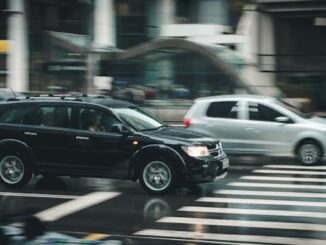
Car accidents can be disruptive and stressful, especially when the responsible party is unidentified or uninsured. In Ontario, Canada, drivers have recourse through their insurance policies under provisions governed by the Insurance Act. Understanding how unidentified and uninsured coverage works can help you navigate the aftermath of an accident more confidently and ensure you receive appropriate compensation for damages.
What is Unidentified and Uninsured Coverage?
Unidentified and uninsured coverage, also known as uninsured automobile coverage, is a mandatory component of car insurance policies in Ontario. It provides protection to insured drivers in situations where:
- The At-Fault Driver is Unidentified: This includes hit and run accidents where the driver who caused the accident cannot be identified.
- The At-Fault Driver is Uninsured: This applies when the driver responsible for the accident does not have valid insurance coverage.
Key Provisions Under the Insurance Act
According to the Insurance Act of Ontario, uninsured automobile coverage must be included in all standard automobile insurance policies. This coverage ensures that innocent victims of car accidents are not left financially vulnerable due to the actions of uninsured or unidentified drivers.
How Uninsured Automobile Coverage Works
- Reporting the Accident: If you are involved in an accident where the at-fault driver is unidentified or uninsured, you must report the incident to your insurance company promptly. Provide them with details of the accident, including any police reports filed.
- Filing a Claim: You can file a claim with your own insurance company under the uninsured automobile coverage section of your policy. This coverage typically compensates you for:
- Property Damage: Repairs or replacement of your vehicle damaged in the accident.
- Medical Expenses: Coverage for medical treatments resulting from injuries sustained in the accident.
- Other Damages: Additional expenses such as rental car costs or loss of income due to the accident.
Policy Limits: Like other types of insurance coverage, uninsured automobile coverage has specific limits and deductibles outlined in your policy. Review your policy documents or consult with your insurance provider to understand the extent of your coverage.
Benefits of Uninsured Automobile Coverage
- Financial Protection: Ensures you are not financially burdened by damages caused by uninsured or unidentified drivers.
- Peace of Mind: Knowing that you have coverage in place in case of such incidents can provide peace of mind while driving.
- Legal Compliance: Complies with Ontario’s legal requirements for mandatory insurance coverage, protecting both drivers and pedestrians.
Who is Covered?
Uninsured automobile coverage typically extends to:
- Insured Drivers: Anyone listed on the insurance policy as a covered driver.
- Passengers: Individuals who are passengers in an insured vehicle at the time of the accident may also be covered under the policy.
- Pedestrians: In some cases, pedestrians injured by uninsured or unidentified drivers may also be eligible for coverage under their own automobile insurance policies or through other avenues.
Exclusions and Limitations
It’s important to be aware of potential exclusions or limitations in uninsured automobile coverage:
- Criminal Activity: If you were engaged in criminal activity at the time of the accident, your coverage may be affected.
- Policy Conditions: Review your insurance policy for specific conditions or exclusions that may impact your coverage eligibility.
Steps to Take After an Accident
If you are involved in an accident with an unidentified or uninsured driver:
- Safety First: Ensure everyone involved in the accident receives necessary medical attention. Contact emergency services if injuries are severe.
- Gather Information: If possible, collect information about the accident scene, including photos, witness statements, and any details about the other vehicle involved.
- Report to Police: File a police report detailing the accident and any information you have about the unidentified or uninsured driver.
- Contact Your Insurance Company: Notify your insurance provider about the accident as soon as possible. Provide them with all relevant details and documents, including the police report number.
- Document Everything: Keep records of all communication with your insurance company, including emails, letters, and notes from phone calls. Document expenses related to the accident, such as medical bills or repair costs.
Seeking Legal Advice
In complex cases involving uninsured or unidentified drivers, it may be beneficial to seek legal advice from a qualified lawyer specializing in insurance claims or personal injury law. A lawyer can provide guidance on navigating the claims process, understanding your rights, and ensuring you receive fair compensation for damages.
Conclusion
Unidentified and uninsured automobile coverage is a crucial component of car insurance policies in Ontario, providing protection to drivers in the unfortunate event of accidents caused by uninsured or unidentified drivers. Understanding your coverage under the Insurance Act can help you make informed decisions, protect your financial interests, and ensure compliance with legal requirements. By familiarizing yourself with the provisions of your insurance policy and knowing the steps to take after an accident, you can navigate challenging situations with confidence and peace of mind.



